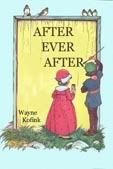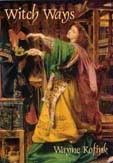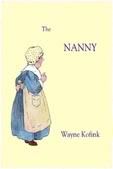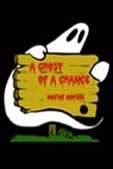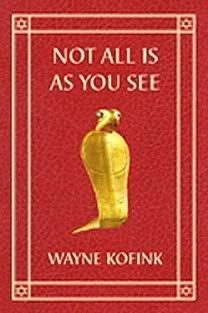BRING BACK THE MYSTERY
 In November, 2105 I attended the Society of Biblical Literature meeting in
In November, 2105 I attended the Society of Biblical Literature meeting in Atlanta. One of the hundreds of sections was on C. S. Lewis and the Bible. Lewis (1898-1963) was a well-known British Christian, author of many books including The Chronicles of Narnia.One very interesting paper presented by Leslie Baynes of Missouri State University was titled “Lewis vs. Bultmann: Myth as fact or Fiction.”
Rudolf Bultmann (1884-1976) was a German theologian who tried to make Christianity relevant for the modern world. He was heavily influenced by the existentialist philosopher Martin Heidegger. His approach was “demythologizing” in which the message of Christianity is separated from the supernatural or mythological aspects of the story of Jesus. Lewis was an absolute contrast to Bultmann. Part of Lewis’s path to Christian faith had come through the influence of J. R. R. Tolkien, of War of the Rings fame, who helped Lewis see Christianity as a “true myth.”
All of the New Testament professors I studied with in seminary were well-versed in Bultmann’s approach to myth although I think it was more his methodology rather than his theological approach that influenced them. They passed on the method to us.
I can’t recall any professor in seminary mentioning C. S. Lewis. In the mid-1970s Lewis wasn’t taken seriously by most mainstream professors of theology. We got a lot of Paul Tillich, another person influenced by existentialism, but nothing so simple or down to earth as Lewis. (By the way, don’t ask me to explain existentialism. I took an entire course on Heidegger, but I still don’t understand it.)
One of the problems with all this Bultmann and Tillich is that it’s all right for sophisti- cated theology classes, but it doesn’t translate into anything comprehensible for congregations. Maybe you can preach on the “ground of being” in Rockefeller Chapel at the University of Chicago, but it won’t work at First Lutheran in Little Falls. More than one pastor has done some “demythologizing” and then had to look for a new call.
The truth is, I think the whole existentialist approach and especially demythologizing was a dead-end for Christian theology. In trying to make the faith relevant, it has robbed it of its power to transform people. That is illustrated by this wonderful section of Kathleen Norris’s book Amazing Grace.
I once heard a Protestant clergywoman say to an ecumenical assembly, “We all know there was no Virgin Birth. Mary was just an unwed, pregnant teenager, and God told her it was okay. That’s the message we need to give girls today, that God loves them, and forget all this nonsense about a Virgin Birth.” A gasp went up. People shook their heads. This was the first (and only) gratuitously offensive remark made at a convention marked by great theological diversity. When it came, I happened to be sitting between some Russian Orthodox, who were offended theologically, and black Baptists, whose sense of theological affront was mixed with social concern. They were not at all pleased to hear a well-educated, middle-class white woman say that what we need to tell pregnant teenagers is, “It’s okay.”
I realized that my own anger at the woman’s arrogance had deep personal roots. I was taken back to my teenage years, when the “de-mythologizing” of Christianity that I had encountered in a misguided study of modern theology had led me to conclude that there was little in religion for me. In the classroom, at least, it seemed that anything in the Bible that didn’t stand up to reason, that we couldn’t explain, was primitive, infantile, ripe for discarding. So I took all my longing for the sacred, for mystery, into the realm of poetry, and found a place for myself there. Now, more than thirty years later, I sat in a room full of Christians and thought, My God, they’re still at it, still trying to leach every bit of mystery out of this religion, still substituting the most trite language imaginable. You’re okay, the boy you screwed when you were both too drunk to stand is okay, all God choose to say about it is, it’s okay.

We have lost a sense of mystery in the Lutheran Church. It’s a process at work since the late 18th century. The 19th century Romantics knew some of what was wrong. The 20th century liturgical movement knew some of what was wrong. Many of our church leaders today have a sense that something is wrong, but few put their finger of the missing element of mystery, awe, transcendence or even beauty.
It comes up in Evelyn Waugh’s book, Bridehead Revisited. Two Oxford friends–upper middle-class art student Charles Ryder and the aristocratic, but tragic, Lord Sebastian Flyte–are talking about religion. Charles is an agnostic. The Flytes are Roman Catholic. Charles says to Sebastian:
“I suppose they try and make you believe an awful lot of nonsense?”“Is it nonsense? I wish it were. It sometimes sounds terribly sensible to me.”“But my dear Sebastian, you can’t seriously believe it all.” “Can’t I?”“I mean about Christmas and the star and the three kings and the ox and the ass.”“Oh yes, I believe that. It’s a lovely idea.”“But you can’t believe things because they’re a lovely idea.”“But I do. That’s how I believe.”’
Is it enough to believe just because something is a lovely idea? Probably not. But something moves Charles Ryder in the story. After an adulterous affair with Sebastian’s sister, Julia, Charles is himself transformed and becomes a believer.
I have attended two services of Lessons and Carols over the past week and listened to one recording. I heard again the annunciation to Mary, the angelic message to the shepherds, the coming of the Wisemen, and St. John’s unfolding of the great mystery of the incarnation. It’s beautiful and mysterious and it probably has the demythologizers spinning. Let them twist and turn as long as they leave the rest of us alone.
May Almighty God, who sent his Son to take our nature upon him, bless you in this holy season, scatter the darkness of sin, and brighten your heart with the light of his holiness.
And may God bless you on your journey and greet you on your arrival.
Wayne



















